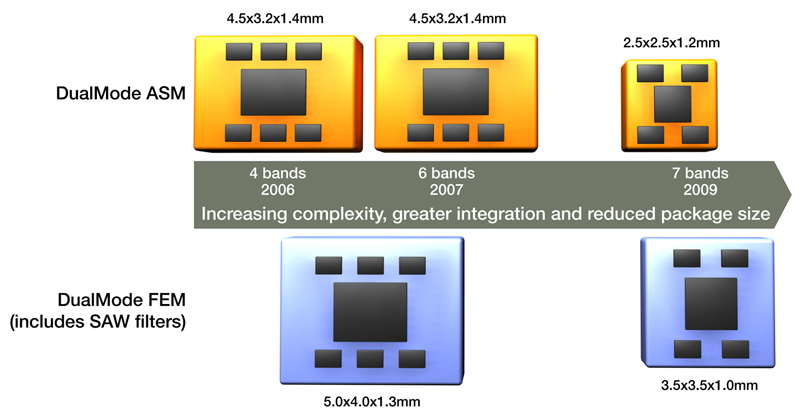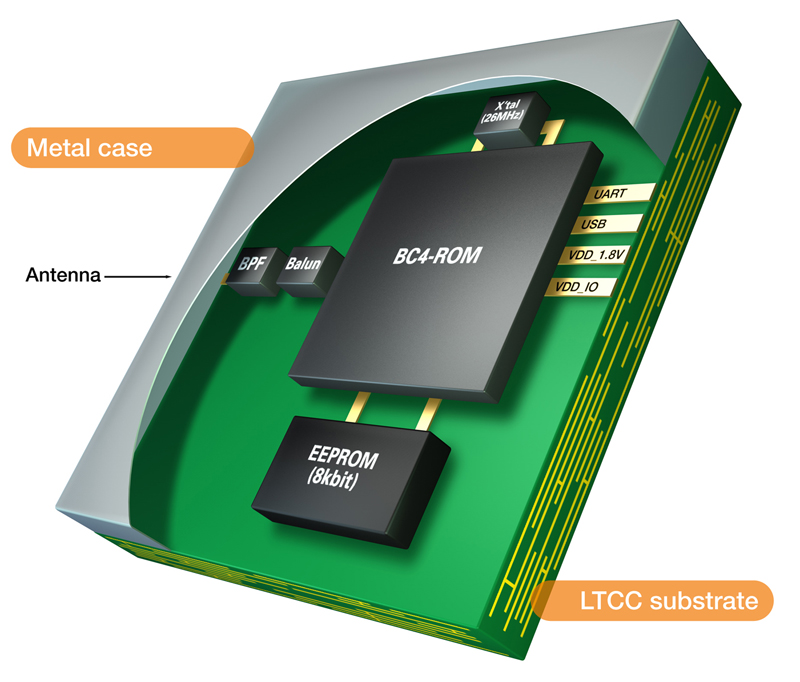Author:
Bruce Haug, Sr. Product Marketing Engineer, Power Products, Linear Technology
Date
06/18/2011
Even before heightened awareness brought on by threats of terrorism, many public and private institutions had already began incorporating video security into critical infrastructure. Video security provides the visual images necessary to improve situation awareness, deter vandalism, theft or other crime, accelerate response and management decisions and increase overall staff and public safety. From airports to bridges, refineries to pipelines, seaports to highways, all have benefited from incorporating video security equipment in their preparedness plans. The first line of defense in airport security is fences, barriers and walls. Especially sensitive areas such as fuel depots, passenger terminals, even baggage handling facilities are more secure with security checkpoints. All of these areas and most locations inside an airport are usually monitored with surveillance cameras. One of the most demanding video security installations is a casino, where the sleight of hand and the quickest of movements must be captured, reviewed and archived to meet stringent regulations. The strategic placement of "Eye in the Sky" cameras supplements a security staff's physical presence, helping to better manage crowds and deploy personnel in a timely and effective manner. High-quality video of gaming areas provides security professionals with the detailed information needed to prevent cheating, as well as catching cheaters. Retail stores benefit from video surveillance systems by serving as a visual deterrent to potential criminal acts and provide managers and security professionals with tools for dealing with liability claims, employee theft or other related issues. As a result, shoplifting and employee theft can be dealt with more easily when the perpetrator is caught in the act on video. Furthermore, slips, falls and liability claims can be more accurately understood and processed when caught on video, too. Contraband, violence, inmate and officer safety are just a few of the issues that must be dealt with on a routine basis in the management of today's correctional facilities. And so, video security has never played a more important role in maintaining order and ensuring a safe working environment. As healthcare facilities grow larger and provide around-the-clock care, they become more vulnerable to a wide array of security risks. While industry guidelines mandate a growing reliance on security under its "Environment of Care" standards, it is the responsibility of each individual hospital and healthcare organization to decide on the right tools to meet their needs for protecting patients, visitors, staff and intellectual property. Camera Deployment To get complete surveillance coverage in most sites, several hundred cameras could be required. One of the most popular ways to monitor and manage a multiple location facility utilizes Internet Protocol (IP) cameras with Power over Ethernet (PoE) capabilities. This type of implementation can significantly simplify and reduce the cost of camera installations since data and power are transferred on the same cable and cameras do not need to be installed near a power source. However, care must be taken with regards to the maximum amount of power that can be drawn from an Ethernet cable. For more information on the maximum allowable power that can be drawn from a PoE interface, see the IEEE 802.3af (PoE) or IEEE 802.3at (PoE+) specifications. Surveillance cameras typically operate from a 24V DC or 12V DC supply voltage at power levels up to 25 Watts. A PoE connection will provide 48V which needs to be stepped down and isolated from its input to output for safety and fault reasons, making the power supply more complicated. However, recent advances in power conversion technology have made low to medium power isolated converters much simpler and easier to design. Flyback converters have been widely used in isolated DC/DC applications for many years, but are not necessarily a designer's first choice. Power supply designers grudgingly choose a flyback out of necessity for lower power isolated requirements, not because they are easier to design. The flyback converter has stability issues due to the well-known right-half-plane zero in the control loop that is further complicated by the propagation delay, aging and gain variation of an optocoupler. Furthermore, a flyback converter requires a significant amount of time devoted to the design of the transformer, a task further complicated by the normally limited selection of off-the-shelf transformers and the possible necessity for a custom transformer. However, Linear Technology's LT3748 isolated flyback controller solves many of these flyback converter design challenges. New Flyback IC Simplifies Design First of all, the LT3748 eliminates the need for an optocoupler, secondary-side reference voltage and extra third winding off the power transformer, all while maintaining isolation between the primary- and secondary-side with only one part required to cross the isolation barrier. The LT3748 employs a primary-side sensing scheme that is capable of detecting the output voltage through the flyback primary-side switching node waveform. During the switch off-period, the output diode delivers the current to the output, and the output voltage is reflected to the primary-side of the flyback transformer. The magnitude of the switch node voltage is the summation of the input voltage and reflected output voltage, which the LT3748 is able to reconstruct. This output voltage feedback technique results in better than �5% total regulation over the full line voltage input, temperature range and load range. Figure 1 shows a flyback converter schematic using the LT3748. The LT3748 accepts an input voltage from 5V to 100V that can be applied directly to the IC. It can reliably operate a high input voltage due to the high voltage onboard LDO and housed in an MSOP-16 with 4 pins removed for high voltage spacing. In addition, its onboard gate driver powers an external N-channel power MOSFET, enabling it to deliver up to about 50W with its maximum output power dependant upon external component selection, the input voltage range and output voltage. In addition, the LT3748's utilization of boundary mode operation further simplifies system design and reduces the overall converter size and footprint. An LT3748 flyback converter turns on its internal switch immediately after the secondary side current reduces to zero and turns off when the switch current reaches the pre-defined current limit. Thus, it always operates at the transition of continuous conduction mode (CCM) and discontinuous conduction mode (DCM), commonly referred to as boundary mode or critical conduction mode.

Primary-Side Output Voltage Sensing Output voltage sensing for an isolated converter normally requires an optocoupler, secondary-side reference voltage and opto driver. An optocoupler transmits the output voltage feedback signal through the optical link, while maintaining the isolation barrier. However, an optocoupler transfer ratio changes with temperature and aging, degrading its accuracy. The LT3748 eliminates the need for an optocoupler, reference voltage and opto driver by sensing the output voltage on the primary-side of the transformer. The output voltage is accurately measured at the primary-side switching node waveform during the off time of the power transistor as shown in Figure 2 where N is the turns ratio of the transformer, VIN is the input voltage and VC is the maximum clamped voltage. The LT3748 sets the output voltage with the selection of RFB and RREF, and the transformer's turn ratio. The load regulation is much improved in boundary mode operation because the reflected output voltage always samples at the diode current zero-crossing. The LT3748 typically provides �3% load regulation.

Transformer Selection and Design Considerations The transformer specification and design is probably the most critical part of successfully applying the LT3748. In addition to the usual list of caveats dealing with high frequency isolated power supply transformer design of having a low leakage inductance and close coupling, the transformer turns ratio must be tightly controlled. Since the voltage on secondary side of the transformer is inferred by the voltage sampled on the primary-side, the turns ratio must be tightly controlled to ensure a consistent output voltage. A tolerance of �5% in turns ratio from transformer to transformer could result in a variation of more than �5% in output voltage. Fortunately, most magnetic component manufactures are capable of guaranteeing a turns ratio tolerance of �1% or better. Linear Technology has worked with leading magnetic component manufactures to produce pre-designed flyback transformers for use with the LT3748.Table 1 shows an abbreviated list of recommended off-the-shelf transformers from Wurth Electronics and Pulse Engineering. A complete listing can be found in the LT3748 data sheet. These transformers typically withstand a 1,500V AC breakdown voltage for one minute from the primary to the secondary. Higher breakdown voltage and custom transformers can also be utilized.

The LT3748 can be modeled using LTspice (free download) with any of the transformers listed in Table 1. The simulation circuit includes information on how the circuit starts up, its reaction to a load step and voltage waveforms at various points within the circuit. It's easy to make design changes and see the impact this has to its circuit performance. A demonstration board using the LT3748 is shown in Figure 3. This circuit accepts an input voltage ranging from 22V to 75V and produces an isolated 12V output at up to 2.5A. Conclusion Although the design of an isolated flyback converter is not a simple task, there is now an alternative to using modules or a complex discrete implementation. An LT3748 based circuit simplifies the design by eliminating the need for an optocoupler, secondary-side reference voltage and opto driver. It maintains primary to secondary isolation with only one part crossing the isolation barrier. Readily available off-the-shelf transformers prevent the need for a custom transformer. The LT3748 operates from a 5V to 100V input voltage range and has the ability to deliver up to 50 Watts of continuous output power, making it suitable for a wide range of security IP camera applications. www.linear.com